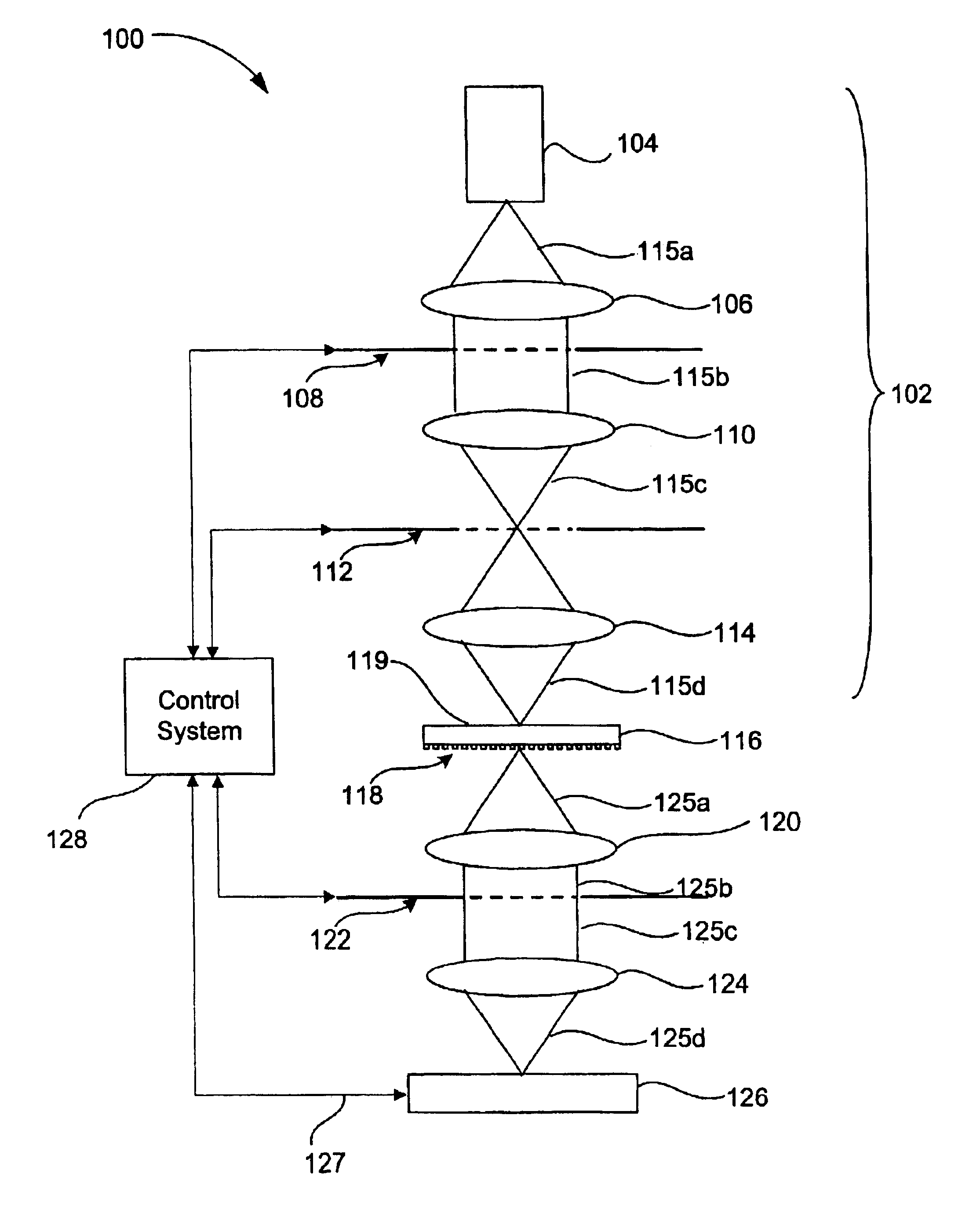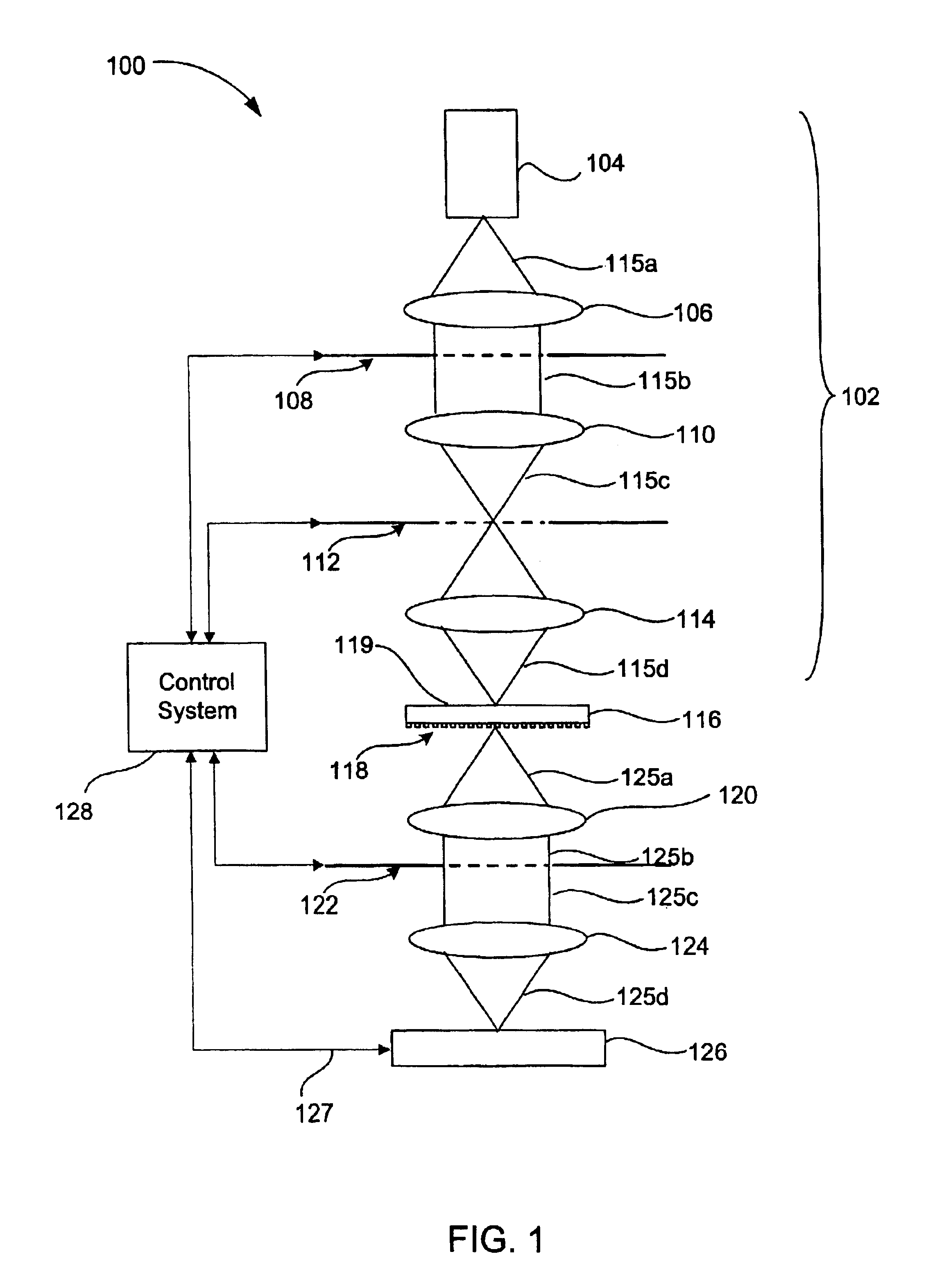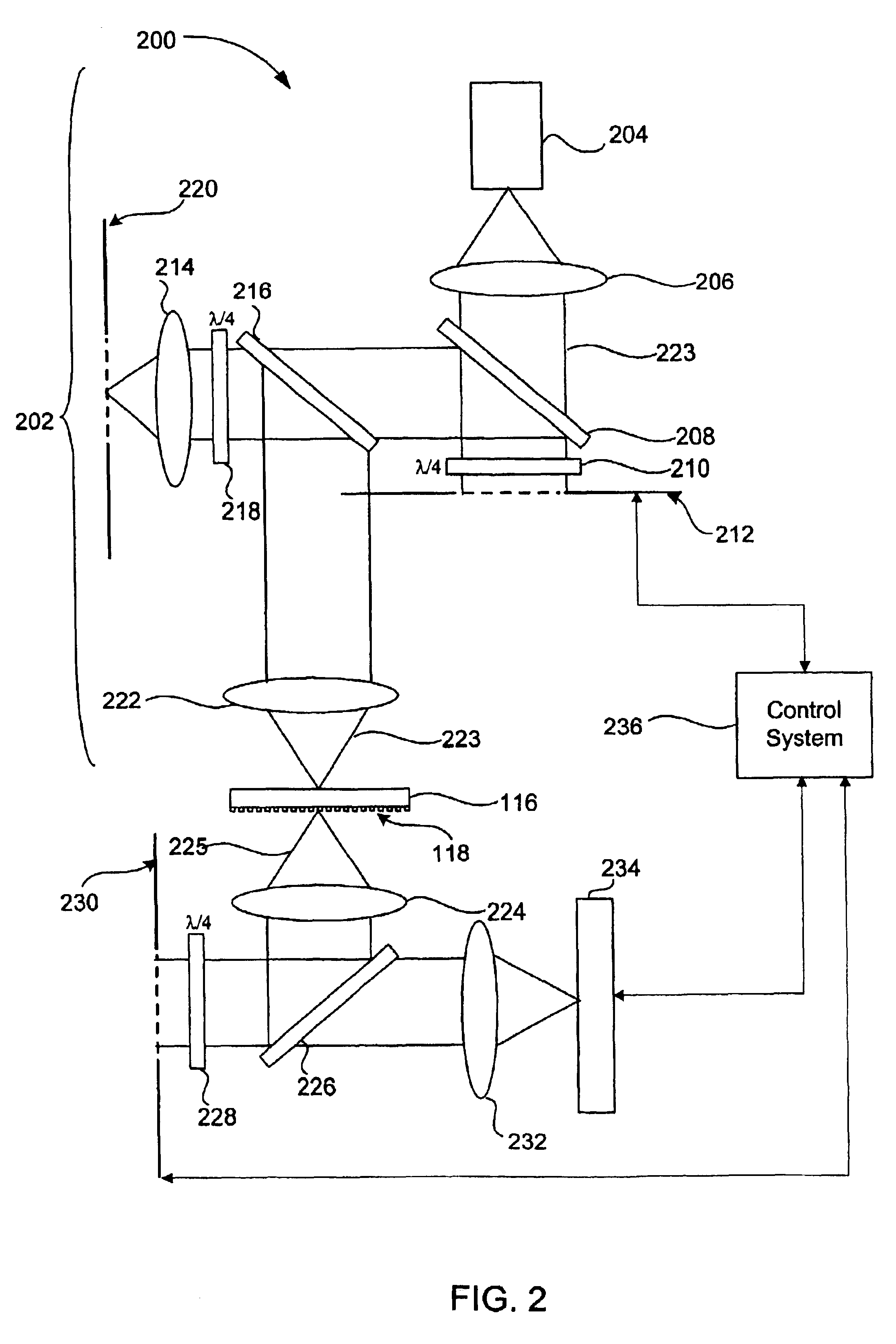Apparatus and methods for removing optical abberations during an optical inspection
a technology of optical abberation and optical inspection, which is applied in the direction of optically investigating flaws/contamination, structural/machine measurement, instruments, etc., can solve the problems of false defects, the fabrication process itself introduces discrepancies between the target structure and the reference image, and introduces discrepancies between the reference and target image, etc., to achieve the effect of eliminating aberrations
- Summary
- Abstract
- Description
- Claims
- Application Information
AI Technical Summary
Benefits of technology
Problems solved by technology
Method used
Image
Examples
first embodiment
FIG. 1 is a diagrammatic representation of a transmission mode inspection system 100 having transmission type spatial light modulators (SLMs) in accordance with the present invention. As shown, the system 100 includes a beam generator 102 for directing an incident optical beam 115 onto sample 116. At least a portion of the incident beam 115 is directed from the sample 116 as an output beam 125 through imaging optics (e.g., 120 and 124) towards detector 126. The detector 126 is generally operable to generate a detected signal 127 that may be transmitted to control system 128 for further processing. Typical features of the control system 128 may include one or more of the following tasks: generating an image of sample 116 based on the detected signal 127, analyzing the detected signal to determine a characteristic (e.g., defect identification) of the sample, and controlling various components of the inspection system 100.
The beam generator 102 may include any suitable light source and...
second embodiment
FIG. 2 is a diagrammatic illustration of a transmission mode system 200 having reflective type SLM's in accordance with the present invention. Similar to the system of FIG. 1, the system 200 of FIG. 2 includes a beam generator 202 having collimating lens 206, relay lens 214, and focusing lens 222 for directing incident beam 223 onto sample 116 having a pattern on surface 118.
In contrast to the system of FIG. 1, the system 200 of FIG. 2 includes SLM's which are reflective instead of transmissive. Accordingly, the system includes several additional components for reflecting either the incident beam or the output beam off each SLM. As shown, incident beam 223 passes through polar beam splitter (PBS) 208, through one quarter wavelength plate 210 onto reflective SLM 212. The SLM 212 may be configured to alter the illumination profile of the incident beam. The incident beam also reflects off of the SLM 212 and passes through the quarter wavelength plate 210. The quarter wavelength plate 2...
third embodiment
FIG. 3 is a diagrammatic representation of a reflective mode system 300 having reflective type SLM's in accordance with the present invention. In an alternative embodiment, the reflective system of FIG. 3 may be combined with the transmission type inspection system of FIG. 1 or 2 into a dual mode inspection system In this illustrated system 300, the incident beam is reflected from sample 116 onto detector 336, instead of being transmitted through such sample as in FIGS. 1 and 2. As illustrated, an incident beam is generated by beam source 304 and directed towards lens 306, which collimates the incident beam. The collimated incident beam is then reflected off PBS 308, through quarter wavelength plate 310, onto reflective SLM 312. The SLM 312 may be configured to adjust the illumination profile of the incident beam and then reflect the incident beam back through quarter wavelength plate 310. The incident beam then passes through PBS 308, through PBS 316 and quarter wavelength plate 31...
PUM
| Property | Measurement | Unit |
|---|---|---|
| phase | aaaaa | aaaaa |
| angle | aaaaa | aaaaa |
| reflection inspection | aaaaa | aaaaa |
Abstract
Description
Claims
Application Information
 Login to View More
Login to View More - R&D
- Intellectual Property
- Life Sciences
- Materials
- Tech Scout
- Unparalleled Data Quality
- Higher Quality Content
- 60% Fewer Hallucinations
Browse by: Latest US Patents, China's latest patents, Technical Efficacy Thesaurus, Application Domain, Technology Topic, Popular Technical Reports.
© 2025 PatSnap. All rights reserved.Legal|Privacy policy|Modern Slavery Act Transparency Statement|Sitemap|About US| Contact US: help@patsnap.com



